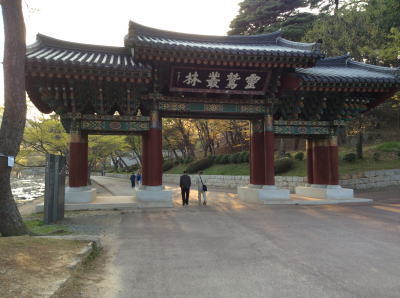 |
from Wikipedia
Tongdosa was established by the monk Jajang after returning from China in 646 CE,[3] during the reign of Queen Seondeok of Silla. It thrived throughout the Unified Silla and Goryeo periods, when Buddhism was the state religion, and remained strong even in the Joseon Dynasty.
Tongdosa is reputeded to house several relics of the Sakyamuni Buddha himself, including a robe, a begging bowl, and a bone from his skull,[3] all relics that Jajang brought back from the travels to China he undertook in 636 to study with ten other monks.
Only one building, the Daeungjeon (main Dharma worship hall), survived the Imjin wars in the late 16th century; the other buildings were rebuilt later that period. In the mid 15th century at the height of its prosperity, Tongdosa is said to have had hundreds of buildings and thousands of monks.[3] For over 1,300 years Tongdosa's Beopdeung (temple candle) has never gone out.[2]
|
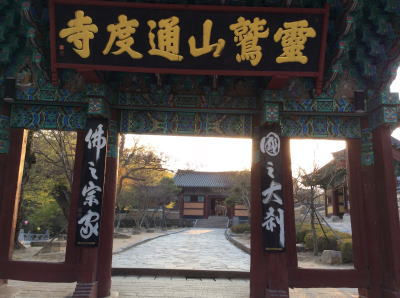 |
For more information, please see Tongdosa in wikipedia. |
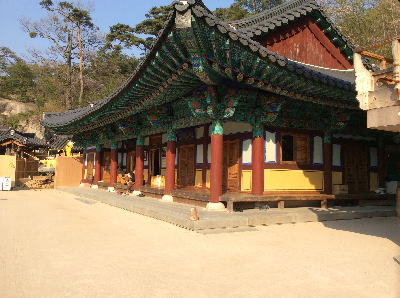 |
There are many small temples in the premise of Tongdosa, and today's stage
of Tea Ceremony is Anyangam Temple. |
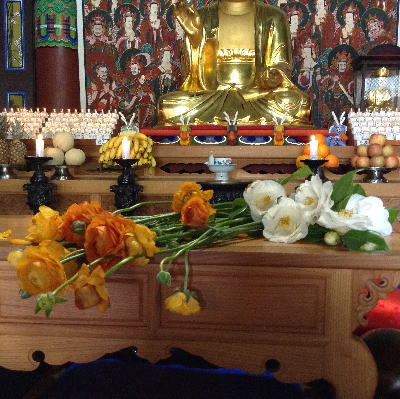 |
First of all, flowers were donated to Buddha.
Popies and white camellias. |
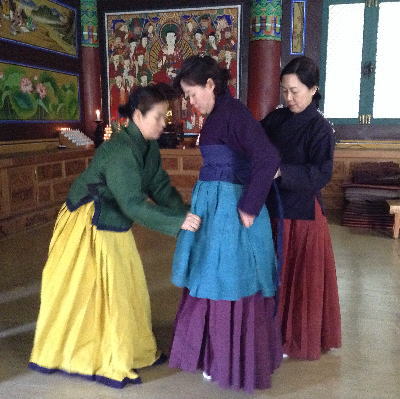 |
The dress is Mr. Kan's invention, with a hint of old Korean dress of Goryeo
Dynasty. This costume is called 'Ta-bok (Tea Dress)'. |
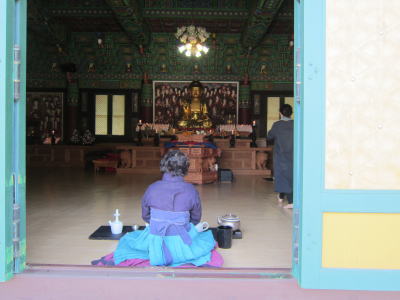 |
They are preparing the ceremony. |
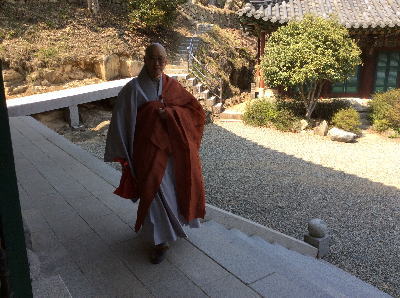 |
The Head Monk of this temple appeared. |
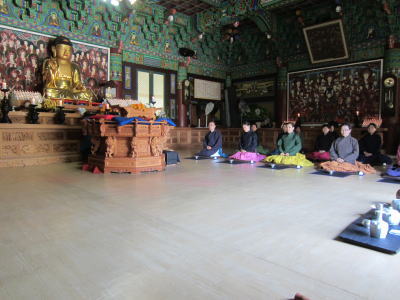 |
Silence before the start. |
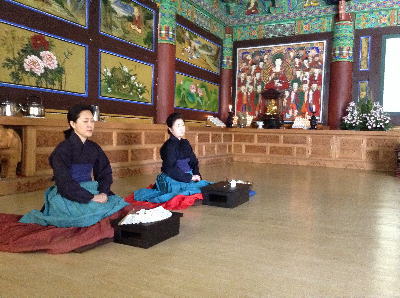 |
Two ladies take the first move. |
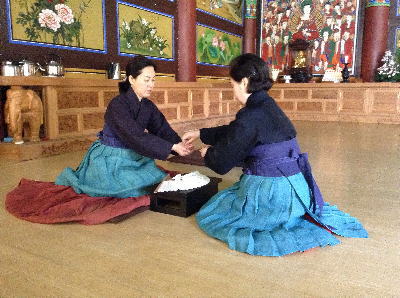 |
One gave some incense to the other's palms.
And next this incense powder was shared to each member in the room. |
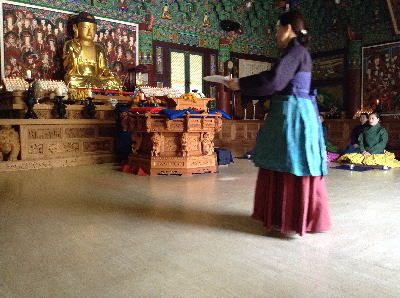 |
Next, the lady with a white fan proceeds to the Buddha. |
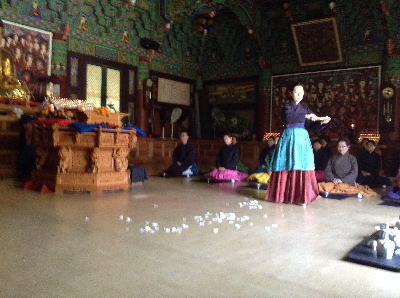 |
As if dancing, she elegantly spread the flower pedals on the fan to the
floor before Buddha |
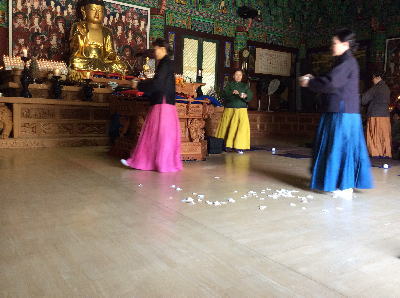 |
Next, tea was offered to Buddha and other statues and pictures. |
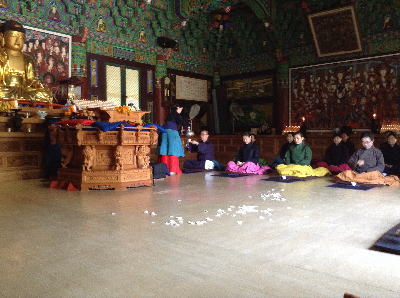 |
After that, everyone was served tea. |
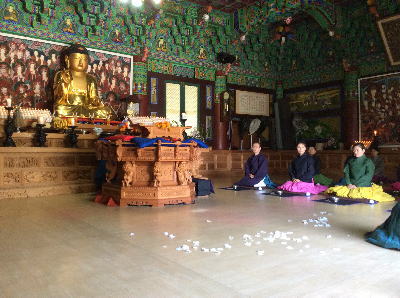 |
After a bowl of tea, it is Meditation time. For ten minutes or so,
silence reigned over the temple. |
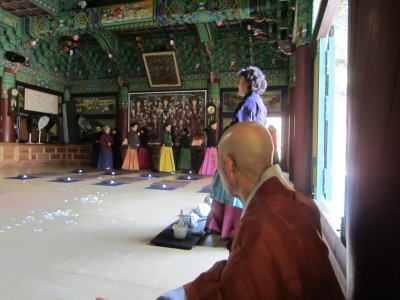 |
Another bowl of tea, then, walking meditation. |
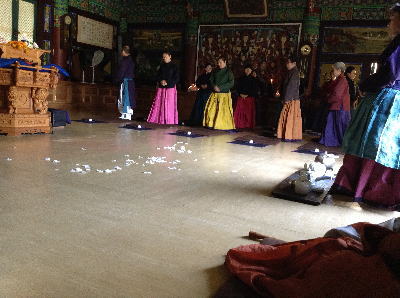 |
The gong told the end of the ceremony. |
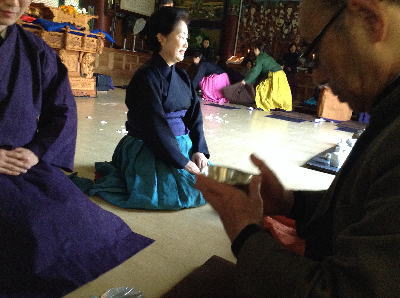 |
The tea bowl donated to Buddha was brought to the monk. |
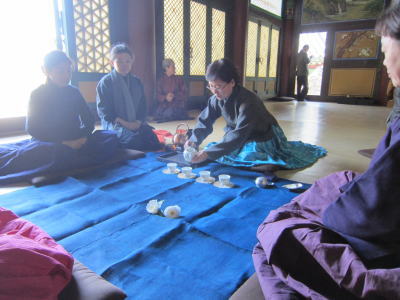 |
Another tea ceremony started. This time it is a tea for friends. |
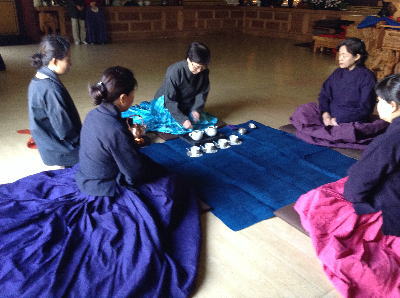 |
One person makes tea, and three guests enjoy the hospitality. |
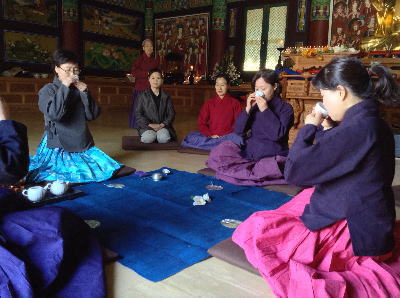 |
All four people drink tea together. |
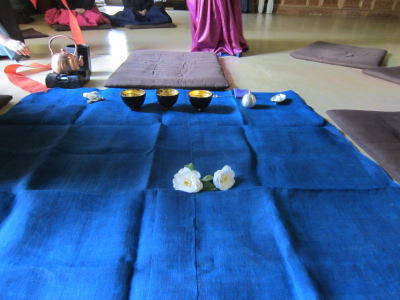 |
Next tea ceremony is done in Japanese style, slightly arranged into Korean
Way. |
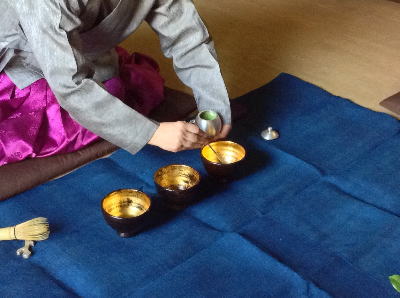 |
Powdered green tea is scooped from the silver tea container into the tea
bowls. |
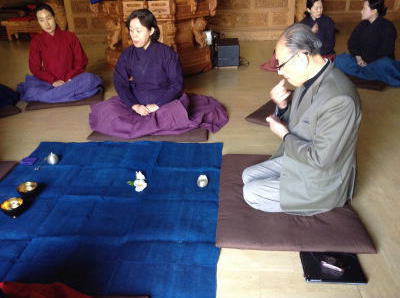 |
My husband was one of the three guests this time.
Before drinking tea, he eats a small sweet thing. |
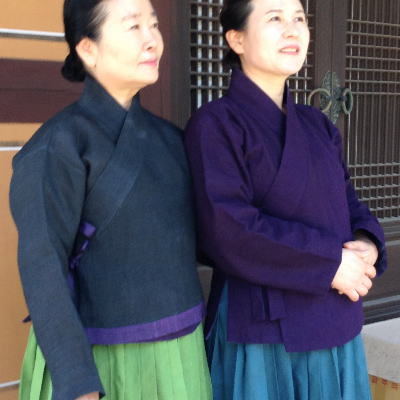 |
Two ladies, who finished today's lesson, are now relaxing. |
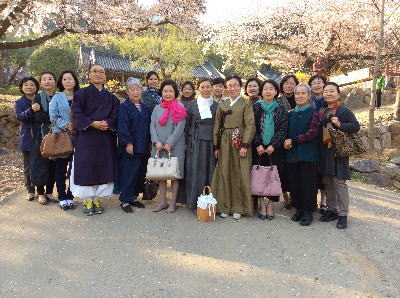 |
These are the people who did this tea ceremony together. |
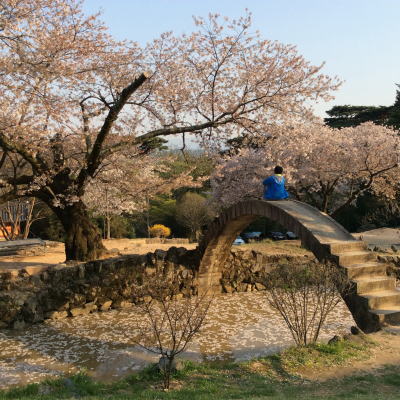 |
Before a small temple, I saw a young man sitting on the round bridge for a long time. just looking at the falling cherry blossoms. I envied him. |
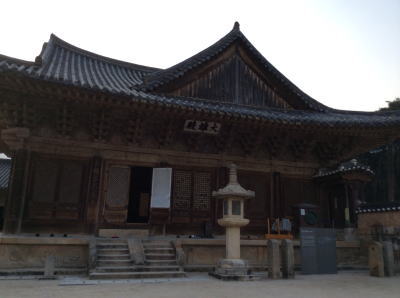 |
Around 6 o'clock in the evening, we went to the main temple of Tongdosa, which is a national treasure. |
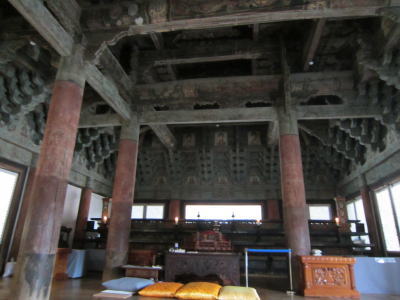 |
There is no image of the Buddha or Bodhisattvas, as is typically found in a worship hall, in Tongdosa. Instead a Buddhist altar that spans east to west inside along the front with a window, in the place of a Buddha image, looks out on the Geumgang Gyedan (Diamond Altar).[ |
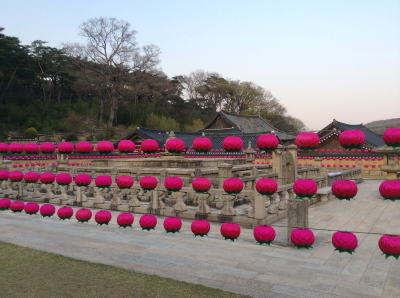 |
Tongdosa is one of five temples in Korea, known as Jeokmyeolbogung, which enshrine the relics of the Buddha that Jajang returned from China. Tongdosa is the ‘Buddha Jewel Temple’ because it enshrines Sari Jinsin (the Buddha’s relics) in the Geumgang Gyedan (Diamond Altar), a platform for the ceremony prevailing Buddhist precepts, behind Daeungjeon (main Dharma Hall) |
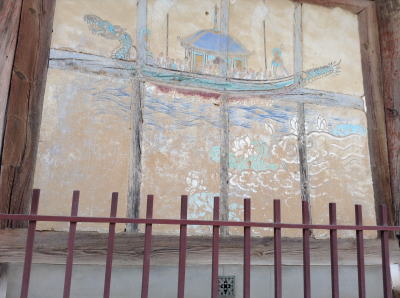 |
A famous wall painting . |
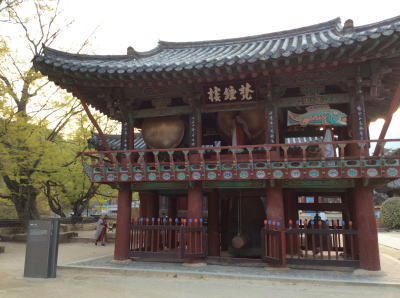 |
Drums and bells were beaten at 6:30 in the evening.
The sounds have deep meaning. They are to save all the souls in this world,
on the ground, under water and above the sky. |
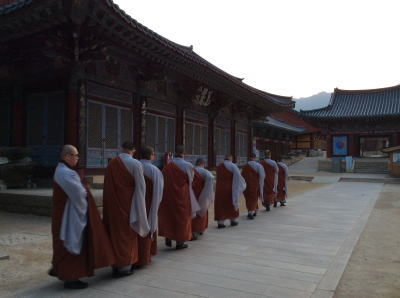 |
After the drum beating, monks hurry to the main hall to pray. |
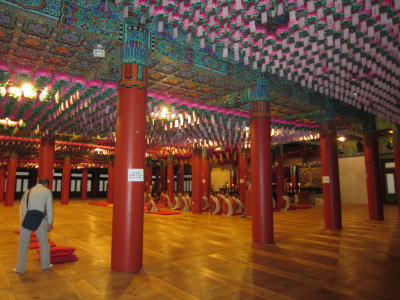 |
Next to the national treasure building, there is a big hall, where
almost 80 monks got together to do an evening ritual. |
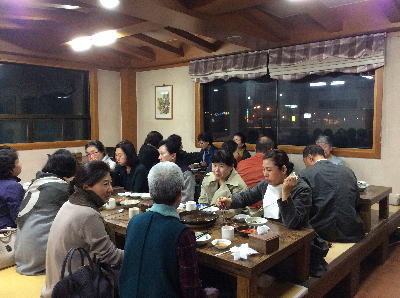 |
After the ritual, we took a late supper at a small restaurant near the
gate of Tongdosa. |
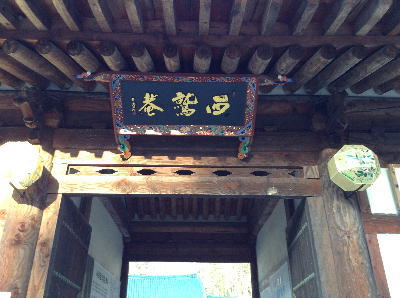 |
After supper, we said good by to the ladies. They were going home now.
It will be very late.
Mr. Kang and one of his student drove us to the small temple in Tongdosa,
where we had one night's stay.
It is Sojykuam Temple, small and new, very beautiful. |
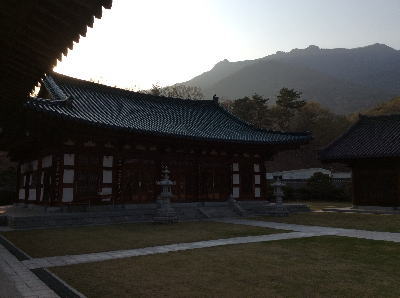 |
It was dark, but my iPad could somehow take a picture of this temple. |
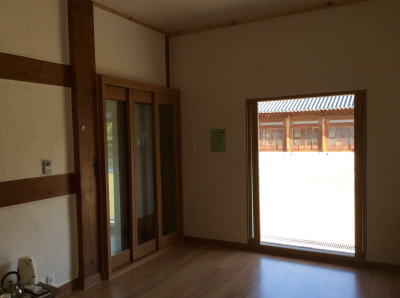 |
The room we stayed.
It was new and clean. |
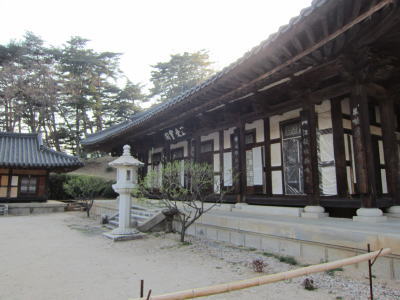 |
The temple in the morning light. |
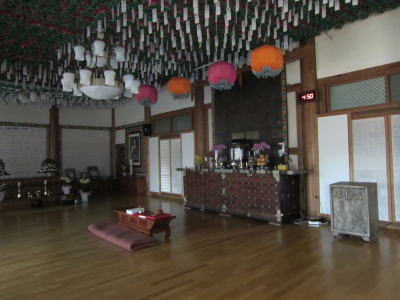 |
Inside. |